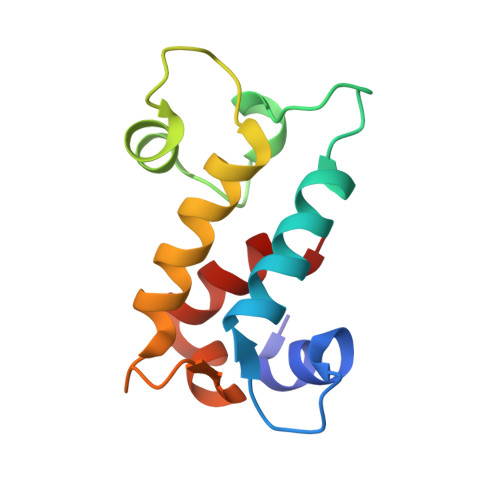Enhanced rare-earth separation with a metal-sensitive lanmodulin dimer.
Mattocks, J.A., Jung, J.J., Lin, C.Y., Dong, Z., Yennawar, N.H., Featherston, E.R., Kang-Yun, C.S., Hamilton, T.A., Park, D.M., Boal, A.K., Cotruvo Jr., J.A.(2023) Nature 618: 87-93
- PubMed: 37259003
- DOI: https://doi.org/10.1038/s41586-023-05945-5
- Primary Citation of Related Structures:
8DQ2, 8FNR, 8FNS - PubMed Abstract:
Technologically critical rare-earth elements are notoriously difficult to separate, owing to their subtle differences in ionic radius and coordination number 1-3 . The natural lanthanide-binding protein lanmodulin (LanM) 4,5 is a sustainable alternative to conventional solvent-extraction-based separation 6 . Here we characterize a new LanM, from Hansschlegelia quercus (Hans-LanM), with an oligomeric state sensitive to rare-earth ionic radius, the lanthanum(III)-induced dimer being >100-fold tighter than the dysprosium(III)-induced dimer. X-ray crystal structures illustrate how picometre-scale differences in radius between lanthanum(III) and dysprosium(III) are propagated to Hans-LanM's quaternary structure through a carboxylate shift that rearranges a second-sphere hydrogen-bonding network. Comparison to the prototypal LanM from Methylorubrum extorquens reveals distinct metal coordination strategies, rationalizing Hans-LanM's greater selectivity within the rare-earth elements. Finally, structure-guided mutagenesis of a key residue at the Hans-LanM dimer interface modulates dimerization in solution and enables single-stage, column-based separation of a neodymium(III)/dysprosium(III) mixture to >98% individual element purities. This work showcases the natural diversity of selective lanthanide recognition motifs, and it reveals rare-earth-sensitive dimerization as a biological principle by which to tune the performance of biomolecule-based separation processes.
Organizational Affiliation:
Department of Chemistry, The Pennsylvania State University, University Park, PA, USA.






















